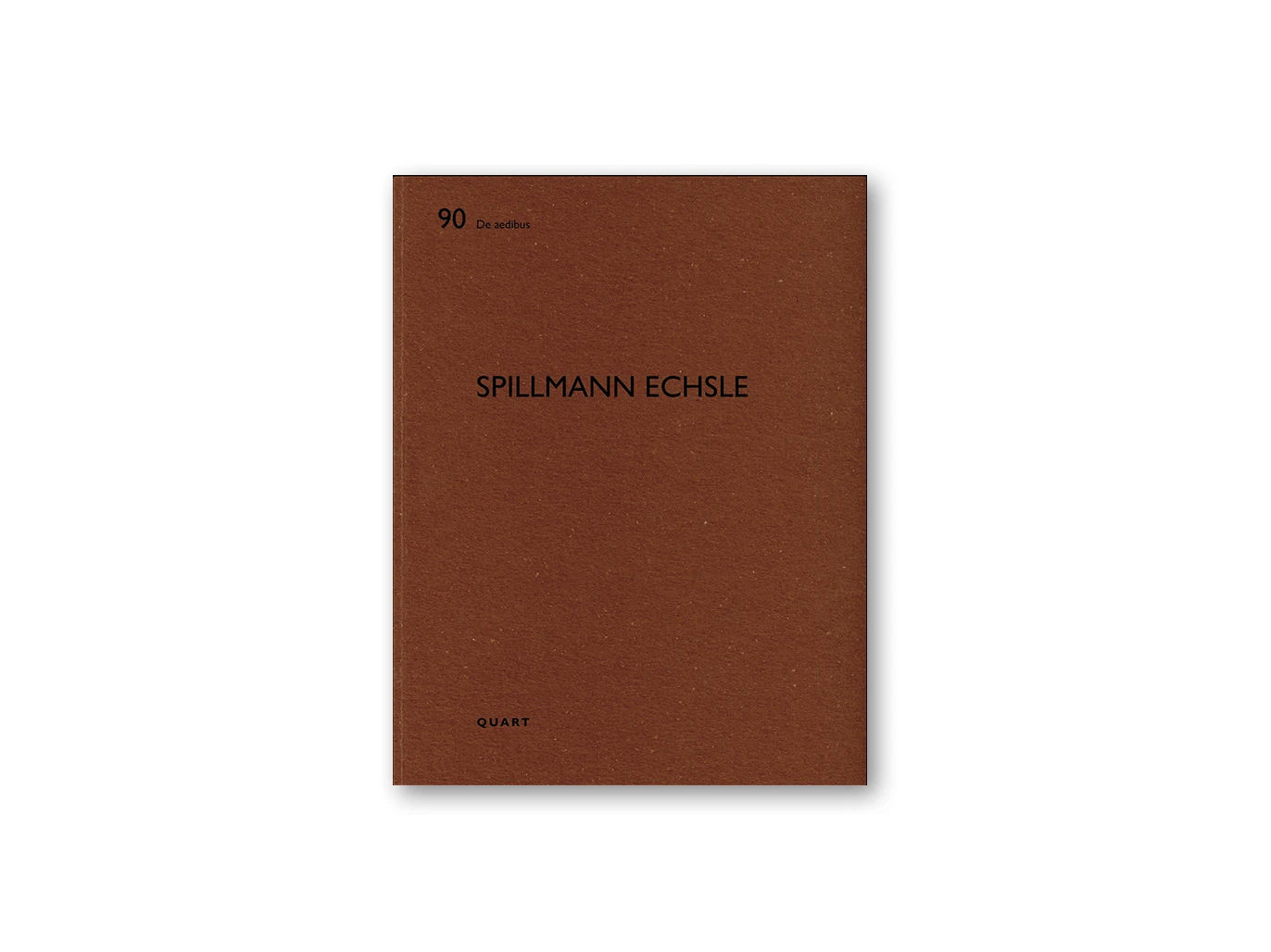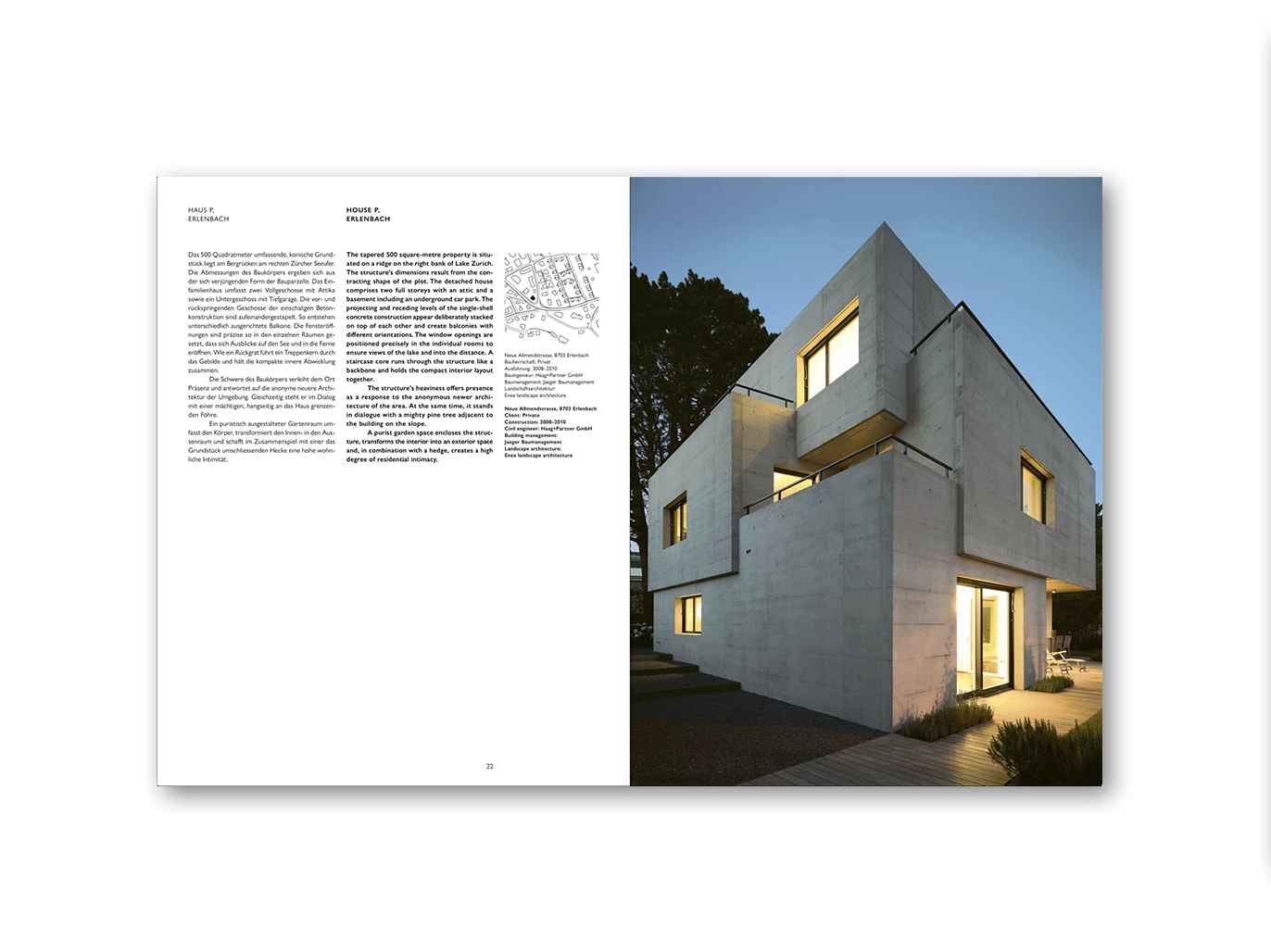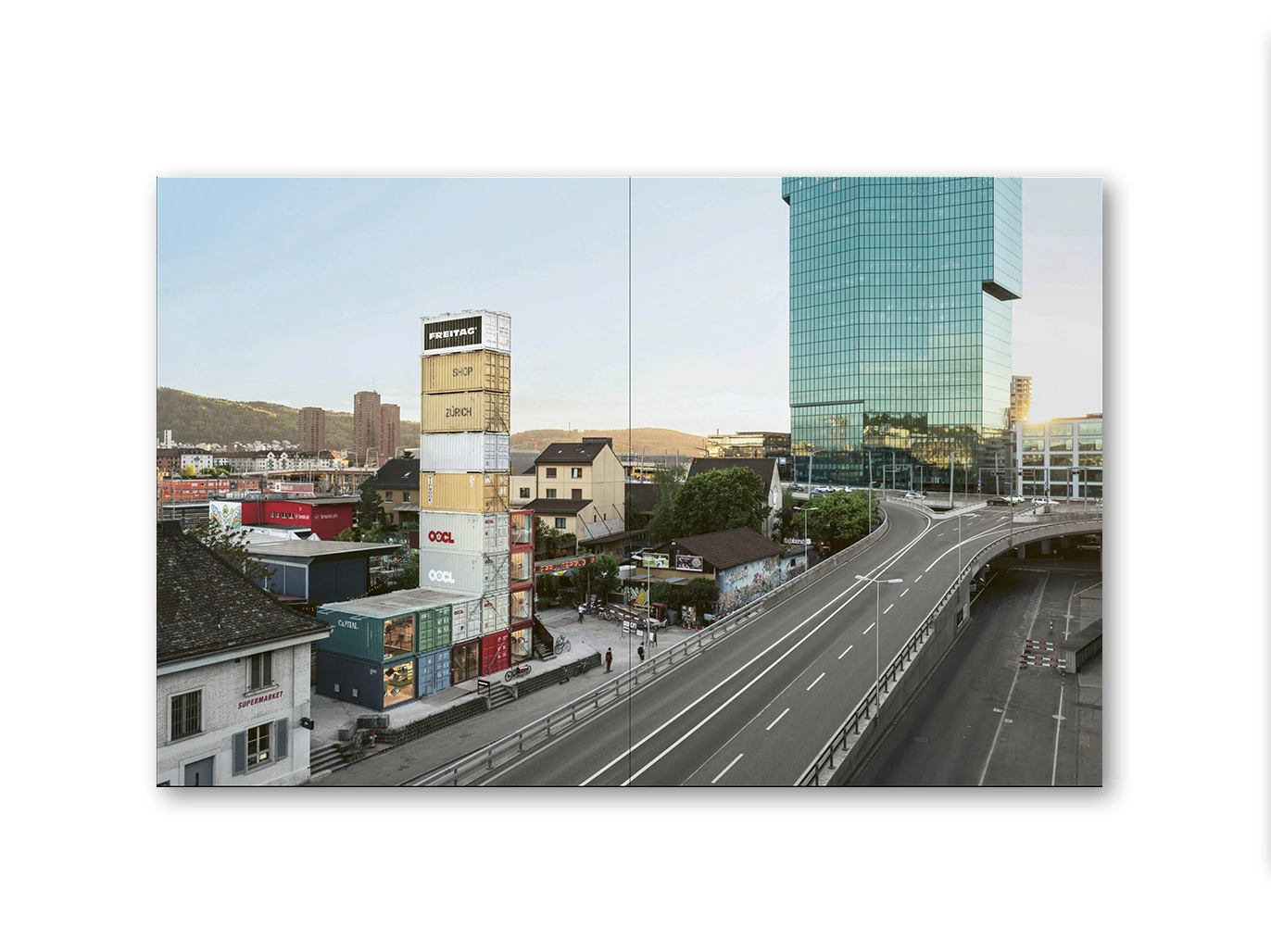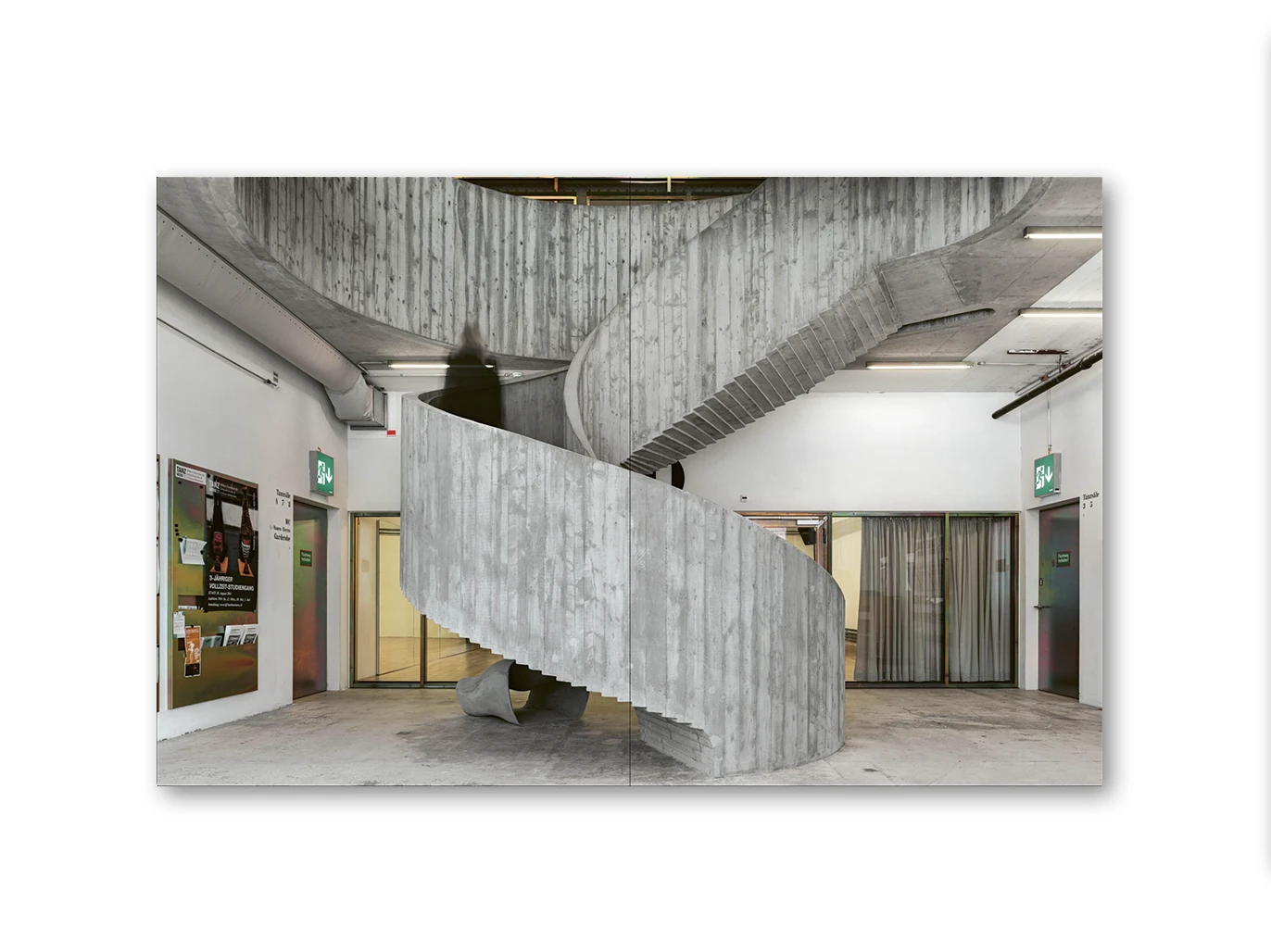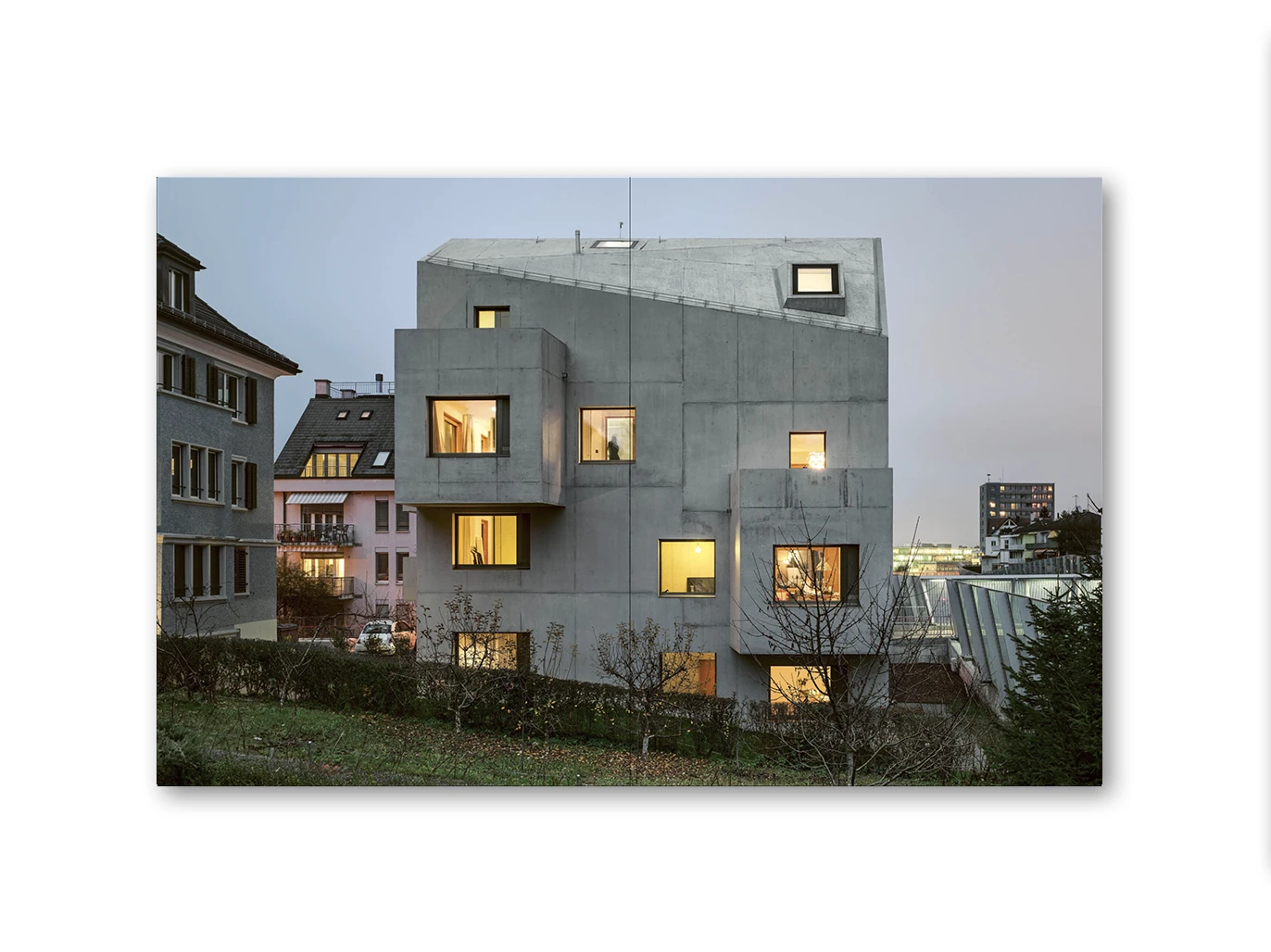MEASURED CONTINUATION: SYSTEMS BEYOND BLIND REPETITION
Sabine von Fischer
Precision and deliberation – qualities often understood as “typically Swiss”, play a role here. And, “a kind of attention that includes a sharp sense for undertones,” as the Swiss scientific philosopher Hans-Jörg Rheinberger de- scribed the term “serendipity” when referring to unexpected scientific discoveries in his essay “Science and Experiment”.
Annette Spillmann and Harald Echsle play with systems, pushing boundaries while creating multifaceted spaces. They are known for works that unleash spatial potentials and bring forth material qualities, despite any given restrictions while intervening in listed historical structures or temporary buildings. Even in ambitious commercial projects, a preference for the raw, direct and elementary prevails. However, the architects’ attitude has nothing to do with an un-Swiss nonchalance or exaggerated modesty, but rather with a precise observation of the state of things as they are.
Freedom discovered in found materials
The projects included in this book explore systems and variation, with indi- vidual elements that radiate durability even in temporary structures and when used untreated. Deploying various means: the shipping containers stacked on top of each other in 2006 to house the Zurich Freitag flagship store are bold and colourful, whereas the Maag concert hall, which Spillmann Echsle com- pleted eleven years later less than a hundred metres to the west, is made of subtly modulated Nordic spruce plywood panels through various treatments and perforations. Abroad, the architects helped establish the image of Swiss architecture with the Freitag stores in Vienna and Tokyo, and on an explicitly diplomatic mission, with the “House of Switzerland”. Composed of prefabricated wooden elements and transported on fourteen lorries to Sochi, Milan, and finally to Zurich during the 2014 Winter Olympics, the house is a study in repetition and deviation.
This approach is not limited to working with lightweight components: in the projects with heavy in-situ concrete elements, parts step out of line to play with one other as if they had always belonged together, creating a space for the unexpected.
The sculptural, monolithic spiral staircase of the Zurich Tanzwerk or the residential buildings in Zurich-Oerlikon and Erlenbach – all monoliths with sculptured roofs are based on a pragmatic, poetic approach. Spillmann and Echsle’s impressive powers of observation often allow them to re-stage the given. As in the Google interior fit-out or the Noerd commercial building, they celebrate the beauty of raw concrete and openly display technical installations over the exposed structure.
Precise thinking replaces control
This design work is never done intentionally to standardize identical components. Instead, the system’s elements constitute the starting point, from which designs gain a sense of freedom, playfulness and aesthetic sensitivity. The archi- tects find their language within the restrictions imposed by prefabricated parts and frequent budget limitations, one that alleges simplicity: the system’s elements are simple, the resulting composition is not.
Spillmann Echsle’s buildings include a variety of prefabricated systems, standardised components and basic structures. Nonetheless, they appear neither uniform nor austere, containing a surprising amount of variation. In Swiss architecture, system thinking has long been associated with standardised building components, yet few people find the resulting buildings to be playful; on the contrary, they reflect a fascination with unparalleled precision. The belief that the world is controllable, however, has long since fallen apart.
Sometimes things have an unexpected outcome. The small tower built to sell Freitag bags, pouches and clothing has been standing on the Gerold-Areal for fourteen years; its temporary use only planned for a few years. Likewise, the provisional concert hall in the former Maag industrial area is becoming ever more permanent as it enters its fourth season. Many musicians and the public call for performances to be continued there in parallel with the new concert hall.
Repurposing industrial sites and using them for entirely different activities requires an attentiveness that keeps the ephemeral within view. The restorations, conversions and extensions of listed buildings presented in this book, such as Hall 550 (formerly ABB) in North Zurich, Building K on the Maag site and the conversion of the Zurich Militaerkaserne, vary from the sur- prising to the barely noticeable. Similarly, the many projects listed only in the list of works, such as the conversion and rebuilding of the SRG Radio Studio Brunnenhof or the Sihlpost, are renovation and recollection measures at the same time.
Planning for the unforeseen has long been an important concept in architecture – giving it expression does not mean giving up precision. Instead, we should abandon the idea that everything is controllable and accept that reality will not conform to lines drawn on paper. That ultimately, our task is to in- corporate entropy to such an extent that not even Maxwell’s demon (a thought experiment in which he questioned the even distribution of energy according to the law of thermodynamics) can undermine a (conceived) building. Just as Maxwell’s demon introduces different energy into a homogeneous field through a small opening, thereby upsetting stability, everyday life frequently brings unforeseen information into precisely defined spaces. Like Sigfried Giedion in his 1929 illustrated story Liberated Dwelling, anyone who pleads for “light, air, movement, opening” should also accept Maxwell’s demon’s movements and thus the constant flux of information and its un- expected situations.
Architecture that is suitable for everyday use also derives its rules from everyday life. Thus it often turned out differently from its creators’ visions of perfect-system constructions, even for the post-war generation. The failure of the 1960s systems thinking was partly due to the assumption that building systems should be subject to total control. What still works for furniture – for instance, the USM Haller shelves – fails in the whole building due to the abundance of specific conditions. Here is where Spillmann Echsle’s playful approach to systems begins. Prefabricated elements and strict geometries recur throughout their portfolio of projects, both large and small, from concert halls to residential buildings. The architects formulated the approach in their A Dictionary of Elements created for the “House of Switzerland”. This precision is then understood as traditionally Swiss.
